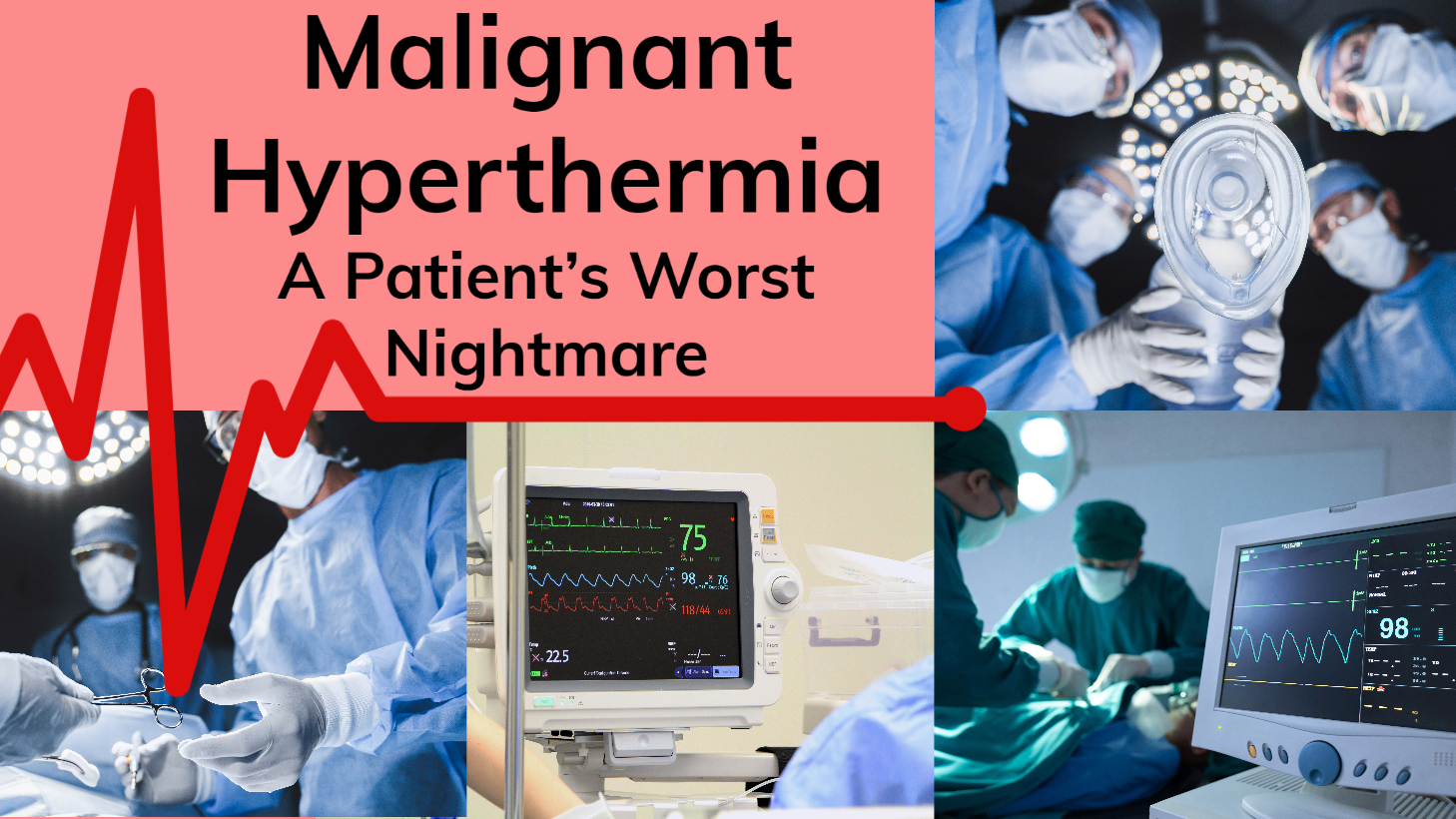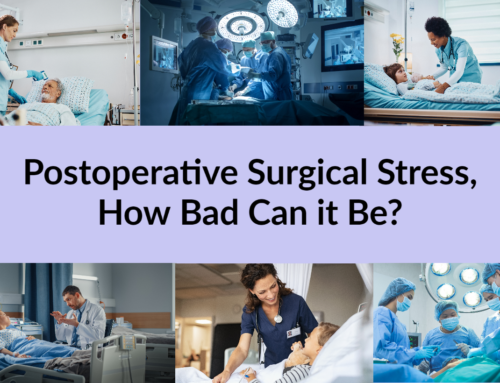Malignant Hyperthermia (MH) is a genetic disease that is triggered by exposure to anesthetic gasses such as: desflurane, enflurane, halothane, sevoflurane. The signs that malignant hyperthermia is occurring are as follows: muscle rigidity, rapid heart rate, high body temperature, muscle breakdown and increased acid content.1
It is the job of the person administering anaesthesia to be able to be aware of when MH is occurring. Cleveland Clinic explains how when you are under anaesthesia, you are asleep or sedated. Making a patient unavailable to notice if symptoms of MH are occurring. They go on to explain how anaesthetists monitor patients very closely in order to respond quickly to any disturbances, such as MH.2 However, in some cases anaesthetists did not monitor appropriately and were unable to detect MH early on.
What can happen if MH goes undetected?
In Florida, in 2009 an 18-year-old girl underwent anesthesia and died from MH. Her family filed a lawsuit claiming that the doctors did not recognize that she had a reaction to the anesthetic and a MH episode. The suit claimed the doctors “failed to meet acceptable medical standards” and they did not recognize the symptoms of MH. As a result, dantrolene, a well known antidote to MH was not administered on time.3 MH symptoms are well known and can be identified if proper patient monitoring, including temperature monitoring, is utilized and actively monitored.
In another report, an older brother lost his brother at just 2 years old from a complication during anesthesia. It wasn’t until decades later, they were able to determine it may have been MH that took his younger brother’s life. As a result of this knowledge, when the old brother’s own infant son faced surgery he was able to get tested to determine if he, and also his son, carried the gene that could trigger an MH episode during surgery. The testing proved that he indeed carried the marker that most likely caused his brother’s death. With this knowledge, precautions were then taken to help assure his own son would be safe from MH during surgery. Nowadays, there are more resources that can help to prevent patients’ deaths caused by MH.4
There was a jury case on behalf of a patient who suffered oxygen deprivation as well as brain damage due to failure in catching MH symptoms early on. This patient was undergoing surgery when they began to experience MH symptoms. This case brings up how the fault could be towards the manufacturers of the anesthetic agents provided to the patient or the negligence of the anesthesiologist and other medical personnel for not recognizing and immediately treating the MH symptoms.5
In New York during 2020, a 7-year-old boy who underwent anesthesia for a surgery suffered an allergic reaction from the anesthetic. He experienced malignant hyperthermia which resulted in multi-organ failure, cerebral infarction, lower leg paralysis, bilateral deformity, left eye vision impairment. The family sued the anesthesiologist for neglect in not properly monitoring his body temperature and allowing it to reach 110 degrees before providing treatment. The boy’s mother claims that if the anesthesiologist caught on and treated her son at a lower body temperature, they could have avoided intellectual and cognitive impairments.6
Complications during anesthesia may not be a hundred percent avoidable, yet they can be detected early on when patient monitoring per the required standards is utilized and actively monitored. In addition to other monitoring parameters, temperature monitoring has been identified as a key indicator of an MH episode. When core body temperature is continuously monitored via an electronic temperature probe, the anaesthetist may be able to detect the rise in patient temperature which often occurs during an MH episode.
When undergoing anesthesia, patients are relying on anesthetists, their surgeon and OR staff to make sure their procedure is a success. Recommended practices for patient monitoring and temperature monitoring are vital.
That’s why Starboard Medical, Inc. created a line of disposable temperature probes. We want to make monitoring of the patient’s core body temperature during surgical procedures easy, accessible and cost efficient. Our temperature probe line is designed with patient safety and care in mind.
- https://www.aana.com/practice/clinical-practice-resources/malignant-hyperthermia
- https://my.clevelandclinic.org/health/diseases/17945-malignant-hyperthermia
- https://www.aboutlawsuits.com/anesthesia-malpractice-lawsuit-malignant-hyperthermia-death-6174/
- https://www.greenvilleonline.com/story/news/2018/08/02/greenville-family-spreads-word-potentially-fatal-condition/866379002/
- https://books.google.com/books?id=WdVTCgAAQBAJ&pg=PT1903&lpg=PT1903&dq=settlement+awards+for+malignant+hyperthermia&source=bl&ots=z9EQEZPBWV&sig=ACfU3U1ycJsUC93yOWScO8ysZV4kfRauDw&hl=en&sa=X&ved=2ahUKEwitjdT__ur6AhW-LEQIHagDB7c4ChDoAXoECAcQAw#v=onepage&q=settlement%20awards%20for%20malignant%20hyperthermia&f=false
- https://www.millerandzois.com/anesthesia-malpractice-lawyer.html






